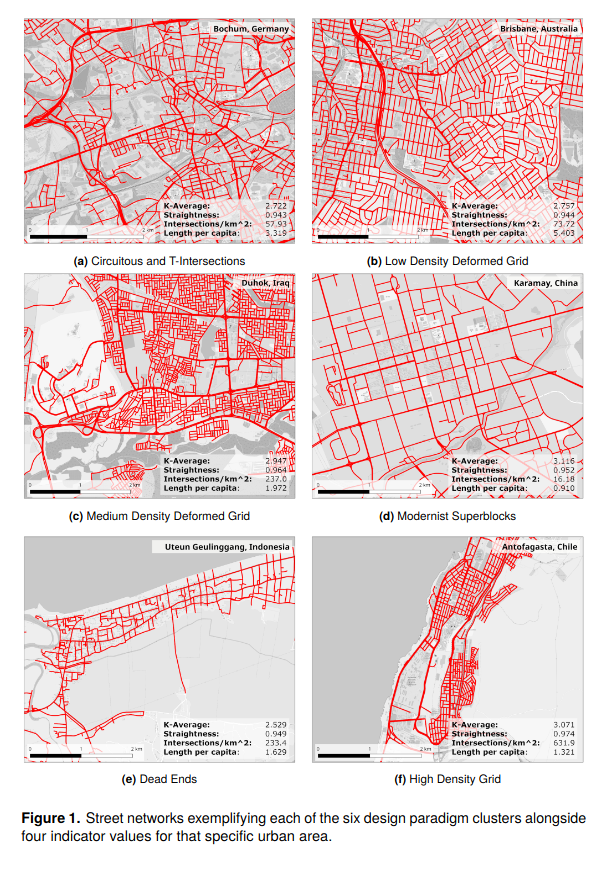I have a new article out in Transportation Research Part D that estimates relationships between street network characteristics and transport CO2 emissions across every urban area in the world and investigates whether they are the same across development levels and design paradigms.
The relationships between street network design and transport emissions in the US, Europe, and China are well-studied. But not so in many of the most rapidly developing parts of the world. Practitioners lack a strong local evidence base for local evidence-informed planning.
We find that, all else equal, more-connected and straighter streets are associated with lower emissions, while greater street lengths per capita are associated with more emissions. However, there is substantial heterogeneity in these relationships.
In other words, these relationships vary across development levels and urban design paradigms—yet most prior literature reports findings from urban areas that are outliers by global standards.
Evidence derived from global models or dissimilar world regions will yield conclusions inapplicable to most local planning contexts. Planners need a better empirical base for evidence-informed practice in under-studied regions, particularly the rapidly urbanizing Global South.
This study estimates the relationships between street network characteristics and transport-sector CO2 emissions across every urban area in the world and investigates whether they are the same across development levels and urban design paradigms. The prior literature has estimated relationships between street network design and transport emissions – including greenhouse gases implicated in climate change – primarily through case studies focusing on certain world regions or relatively small samples of cities, complicating generalizability and applicability for evidence-informed practice. Our worldwide study finds that straighter, more-connected, and less-overbuilt street networks are associated with lower transport emissions, all else equal. Importantly, these relationships vary across development levels and design paradigms – yet most prior literature reports findings from urban areas that are outliers by global standards. Planners need a better empirical base for evidence-informed practice in under-studied regions, particularly the rapidly urbanizing Global South.
For more, check out the article itself in Transportation Research Part D. If you lack institutional access, here’s a free open-access preprint.
